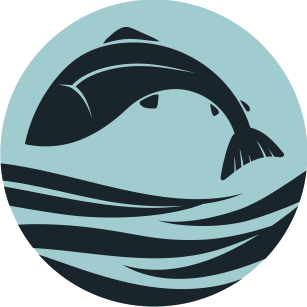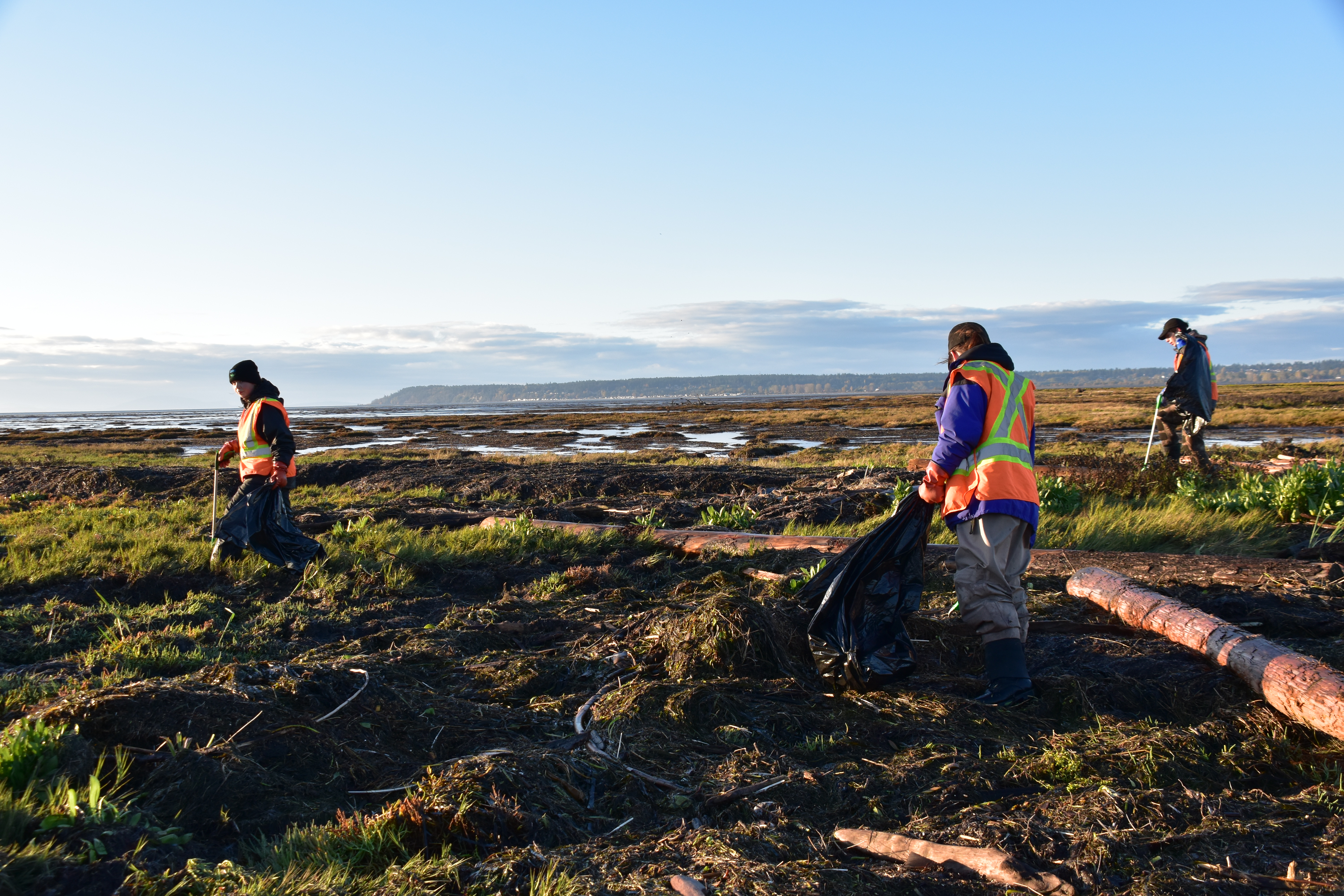Watershed Stewards
The work supported by the Healthy Watersheds Initiative (HWI) is not just impacting watersheds but is providing a positive experience for watershed stewards across the province.
As an economic stimulus program, the HWI aimed to get boots on the ground, with project teams hiring and training local workers who were affected by the COVID-19 pandemic. For many, this work was the first job out of university, allowing them to apply their knowledge and gain hands-on experience out in the field.
What follows is a compilation of the people that are making this work possible.
Kiana Medicine Crane | Yaqan Nukiy Lower Kootenay Band

"When I think of wetlands, personally, I think of a swamp or a marsh, but I do not think about what is really in there, how the ecosystems work, and what affects it and what does not affect it. All of that has been exciting to learn about, and it has gotten me really excited about coming out here and doing more.”
Kiana is a Blackfoot youth who was part of the field crew with the Lower Kootenay Band. The Community is restoring natural wetlands and floodplains by removing reed canary grass, and recontouring altered wetland basins along the Kootenay River.
Kiana found this work to be very significant as water is such an important part of her culture. The lessons she learned as a child were that we are no different from the land and the land is no different from us - we are one and the same.
Jaime | Comox Valley Project Watersheds Society
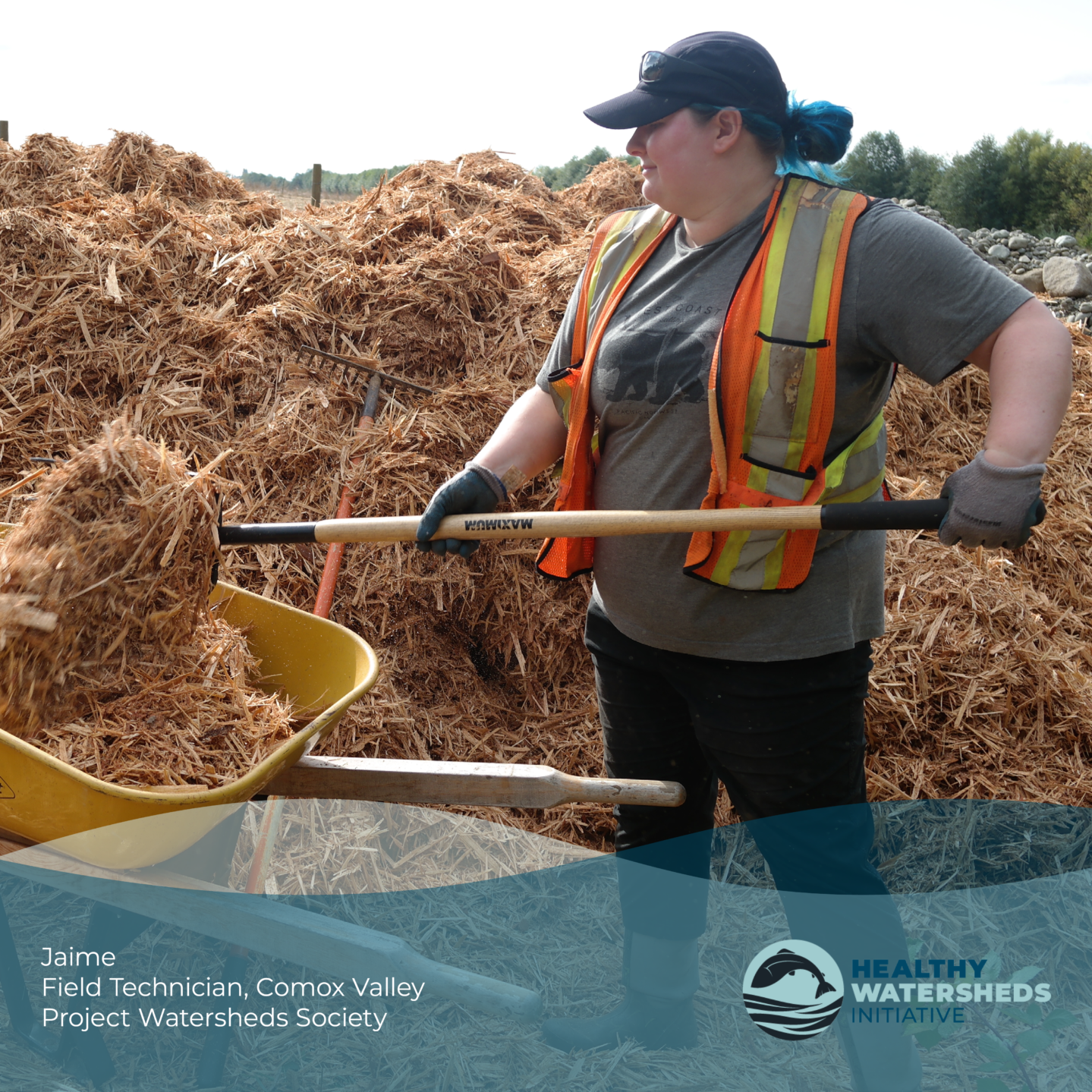
"It has been really nice being super hands-on. This is the first time I have been able to go from the very beginning of a restoration project to seeing what the end goal is going to look like. Starting from nothing and then seeing all of this happen has been really enjoyable.”
Jaime has been working with Comox Valley Project Watershed Society since May of 2021 and is restoring water quality and spawning channels in the Glen Urquhart Creek watershed, a critical wetland and habitat in the Comox Valley. Jamie has been working to remove invasive species like Himalayan Blackberry and planting native species to increase biodiversity, provide food and habitat for birds and other animals, while also stabilizing the stream banks of the Glen Urquhart Creek in Courtenay.
Jaime is excited to be part of a restoration project for consecutive months in a row, allowing her to see the progress of her work from the beginning to the end of the field season. This employment experience through the Healthy Watershed Initiative has given Jamie great hands-on experience and environmental restoration and now wants to go into this professional field permanently to focus on her passion for amphibian and reptile restoration.
Gillian Seitz | Wildcoast Ecological Society
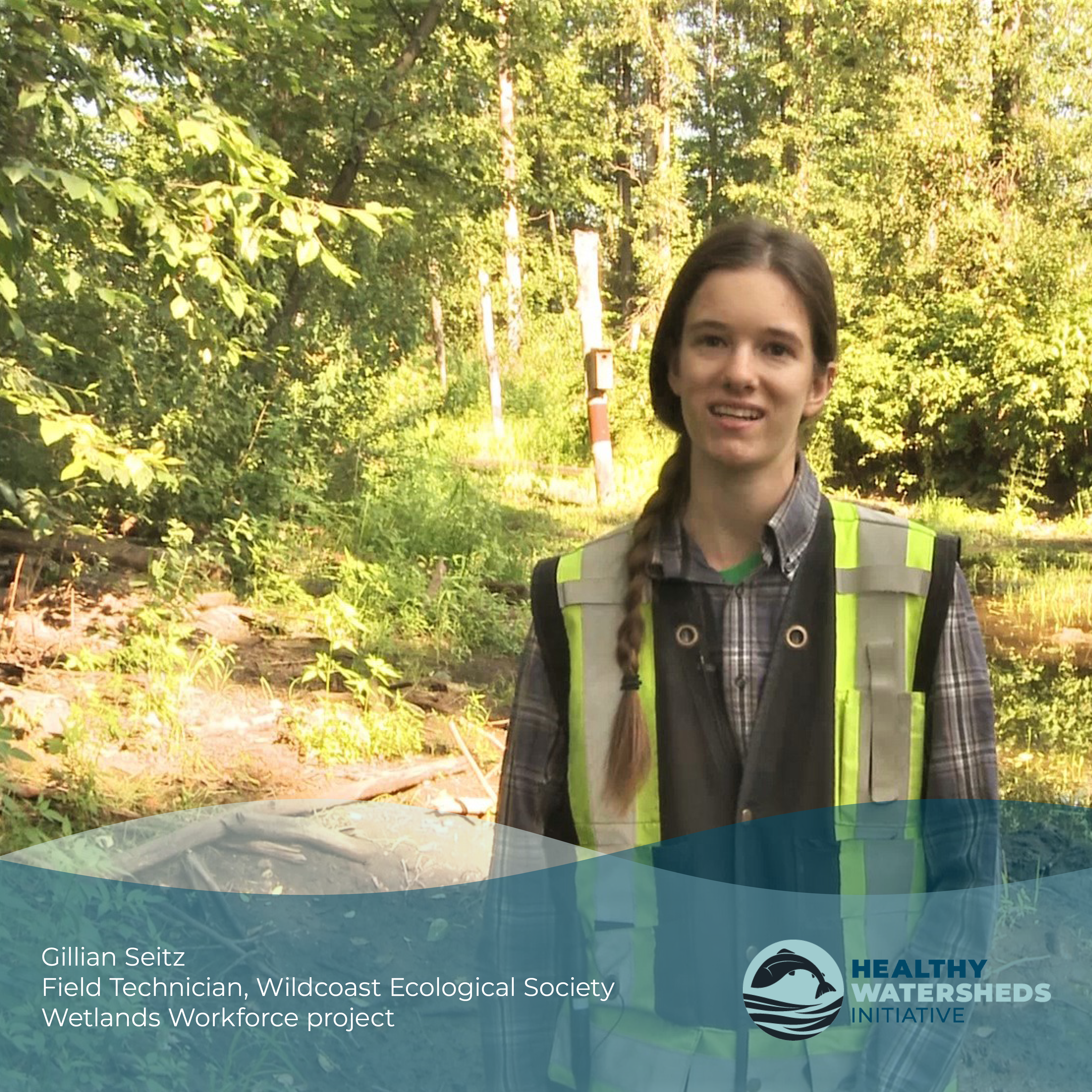
"This has been a great opportunity to get outside, work in my field and collaborate with so many amazing people. Not only have I been able to use the skills that I gained throughout my education, but I’ve been able to further and gain more skills through these different opportunities.”
Gillian has been working to restore, stabilize, and monitor MacKay Creek Marsh in North Vancouver. MacKay creek marsh provides an area for water from nearby storm drains to collect and disperse, and gradually flow into the nearby MacKay creek. Restoration efforts added native plant species that hold soil in place, slow water flow, take up pollutants, and provide wildlife habitat. During the recent atmospheric rain event, excessive water was able to be slowed and stored in the marsh preventing overland flooding.
This employment opportunity through the Healthy Watersheds Initiative has been great to use the skills, knowledge, and experience she gained through her education, but also further those skills and gain new experiences. As a recent graduate in her field of study, there are often limited paying opportunities or short-term seasonal opportunities. This experience has allowed her to secure a full year of meaningful employment while building relationships and partnerships with people and organizations working in the field.
Kyle Prince | Living Lakes Canada

"This funding was very important, it helped to keep our team going, rehires were there, we were able to continue and expand the work, get new team members to support them. There is a lot of gratitude and excitement. This funding has been instrumental in implementing this water data hub.”
Kyle’s work supported the creation of the Columbia Basin Water Hub online database, which brings together hundreds of people across the region engaged in water monitoring projects to pool their findings into a shared hub. This 'Data Hub' is helping communities become more water literate and prepare for climate change impacts on their watersheds.
The investment through the Healthy Watersheds Initiative has supported Kyle and the team at Living Lakes Canada to put watershed work in the Columbia Basin years ahead of where it would be without it. This Data Hub is now able to be used as a template to be replicated in other regions of BC.
Robyn Ingham | Ducks Unlimited Canada
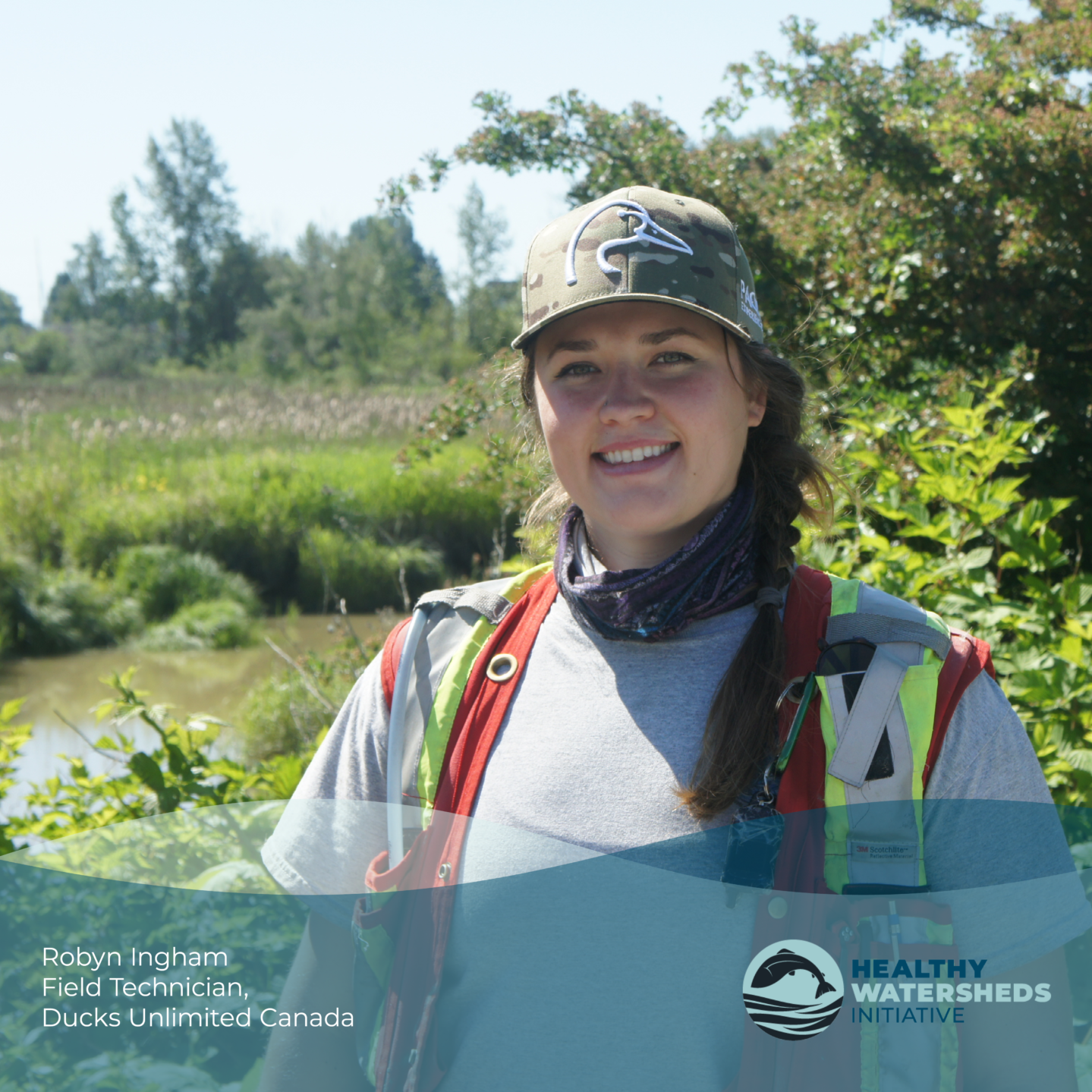
"It’s really satisfying to be a part of an organization or several organizations that are working in conservation and are really fighting for wildlife, nature and preserving things. That’s something I’ve always wanted to do, and I am finally feeling that my goals are aligning, and I am really excited to be here.”
Robyn Ingham worked as a field technician with Ducks Unlimited Canada's Fraser River Estuary Crew, a work-pod of the B.C. Wildlife Federation's Wetlands Workforce project. Robyn was excited to use the skills and knowledge she gained through the Ecological Restoration program at the BC Institute of Technology out in the field. Robyn never worked in wetlands before, but found the experience very rewarding, especially being able to learn from the people she worked with.
Robyn and the Fraser River Estuary crew conducted vegetation surveys of 49 created and natural tidal marsh sites throughout the estuary. These surveys will provide greater insight into the reasons why fish habitat compensation tidal marshes are often unsuccesful in the Fraser Estuary. The crew drafted a report analyzing some of the factors that contribute to tidal marsh compensation success, which will be a useful tool for practitioners and advance the practice of tidal marsh compensation and restoration in BC.
Norm Allard | Yaqan Nukiy Lower Kootenay Band
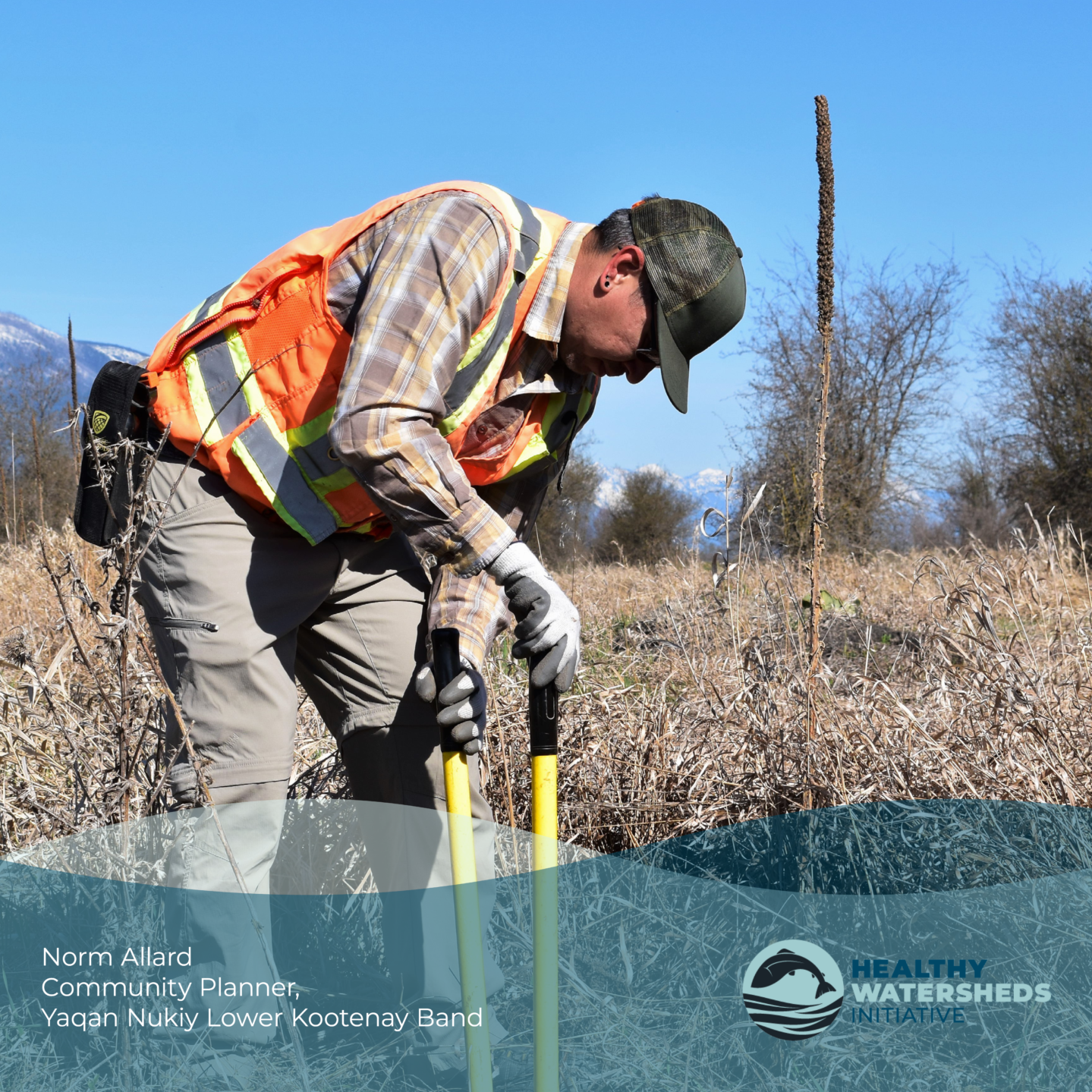
"This work is important because wetlands are some of the most valuable habitats you can restore that cover a vast majority of everything within the area. In restoring wetlands, you can create habitat for a range of animals, plants, invertebrates, amphibians, and fish. Everything uses them.”
Norm Allard is the Community Planner for Yaqan Nukiy Lower Kootenay Band and has been working on the Yaqan Nukiy Wetlands project for the past several years. This project is restoring over 517 hectares of naturally appearing and functioning wetlands and floodplains by filling ditches, removing reed canary grass, and recontouring altered wetland basins along the Kootenay River.
The Healthy Watersheds Initiative was able to support the next phase of this project as well as support a crew that helped with invasive species removal, planting, seeding and monitioring work. Norm sees initiatives like HWI as an opportunity for people to develope their skills and to get outside working in wetlands, with the hope that they will see the value of these ecosystems. Norm believes large scale resotration work and monitoring projects will be key in the coming years as communties seek ways to mitigate the effects of climate change.
